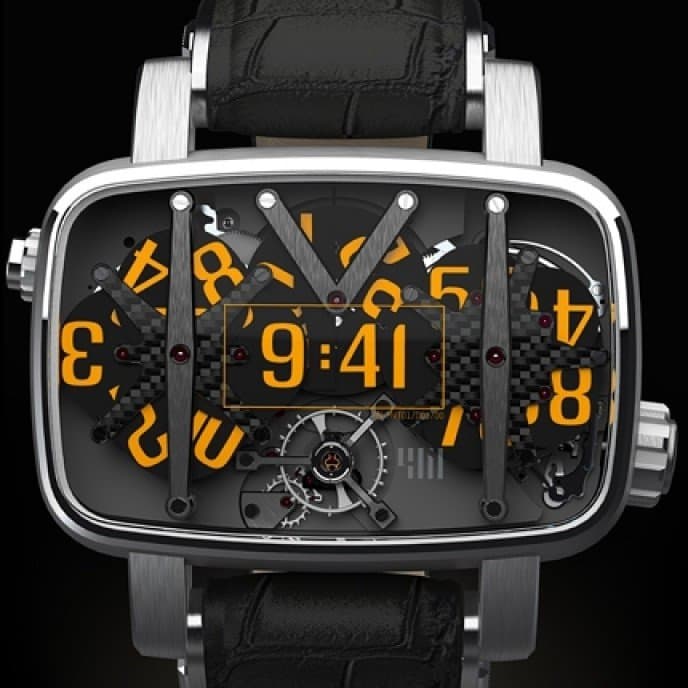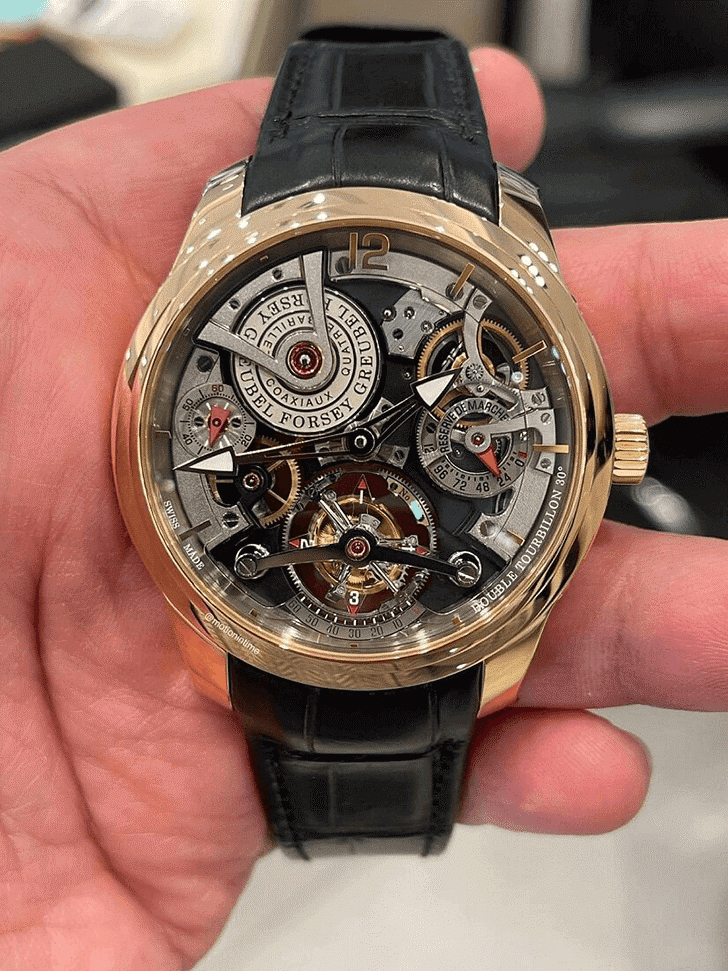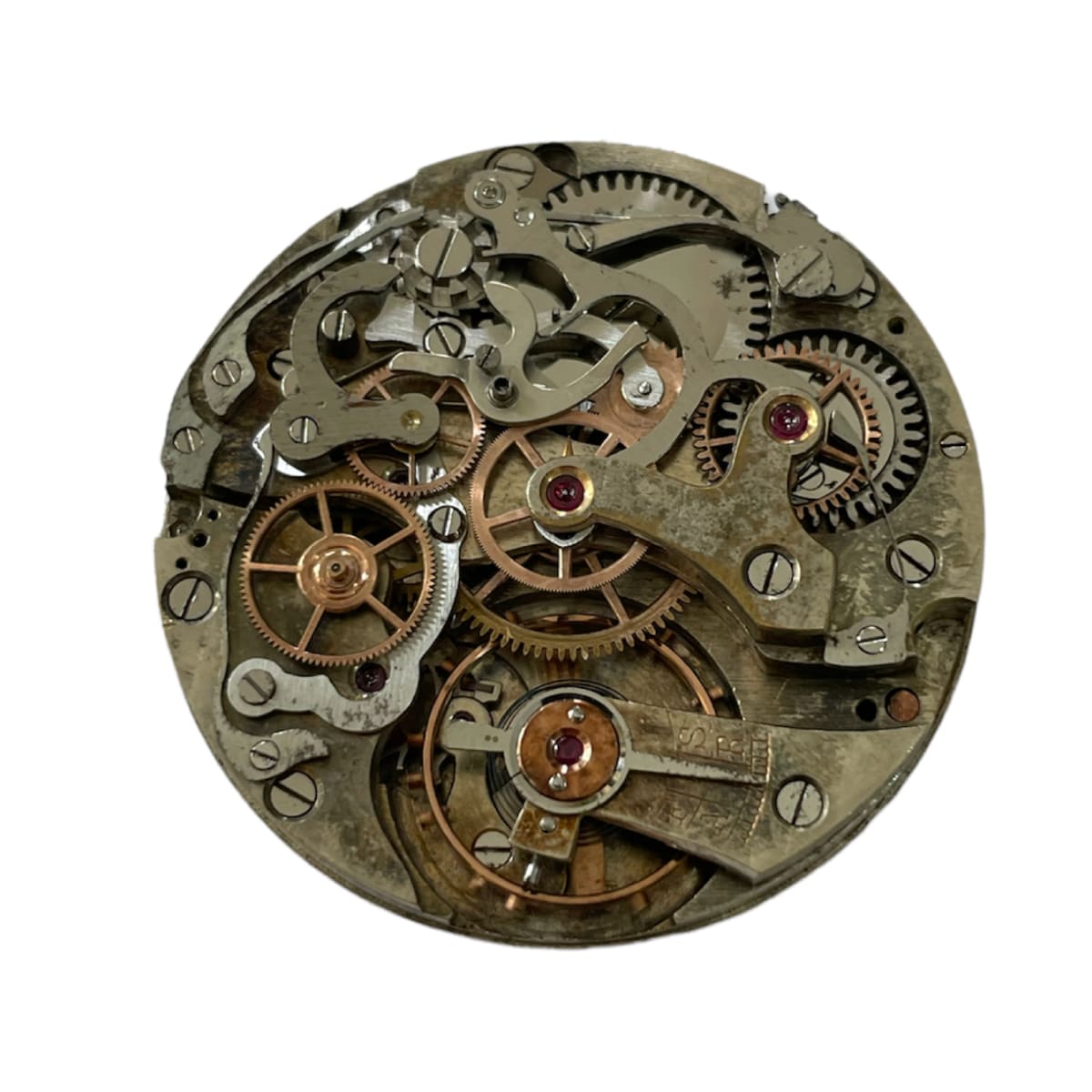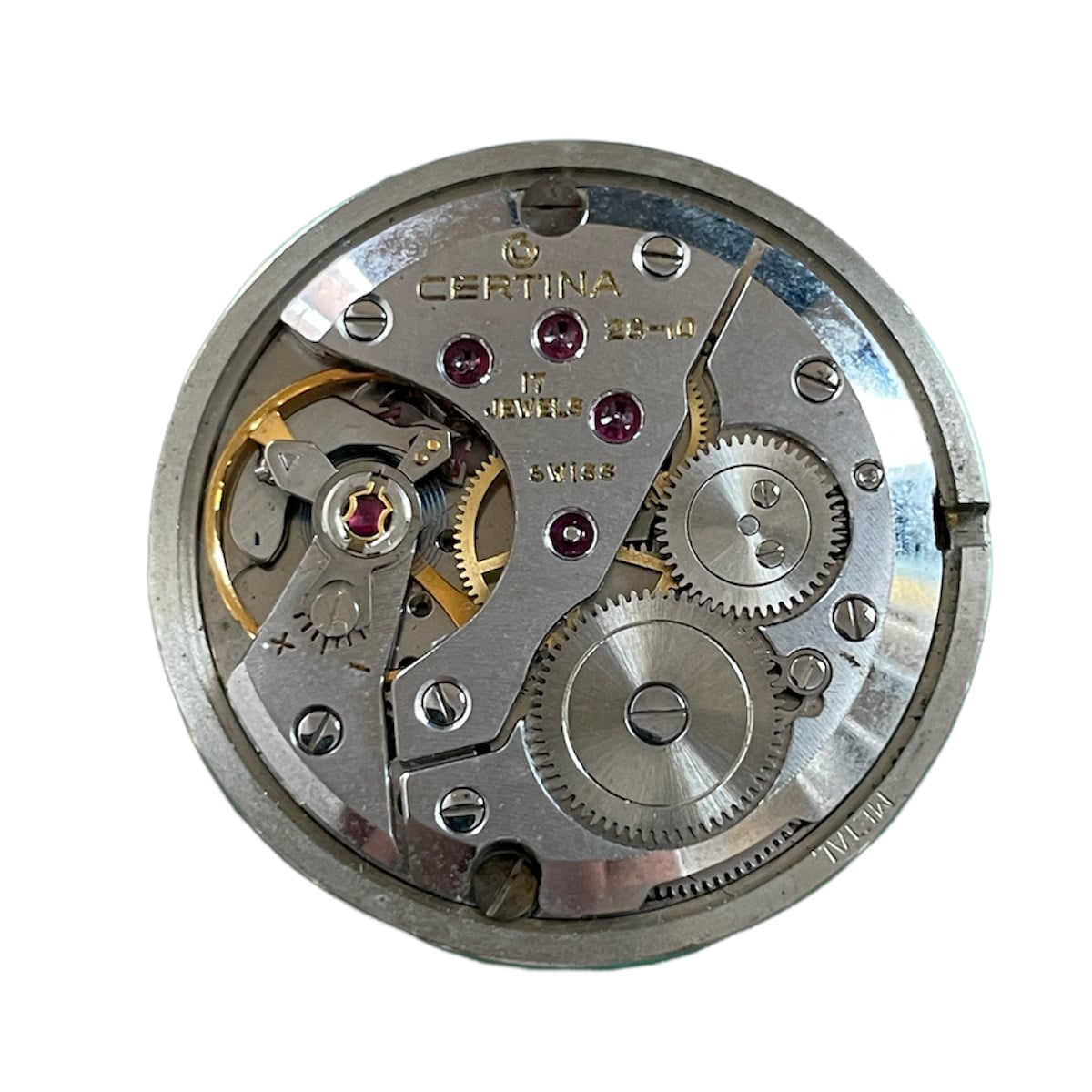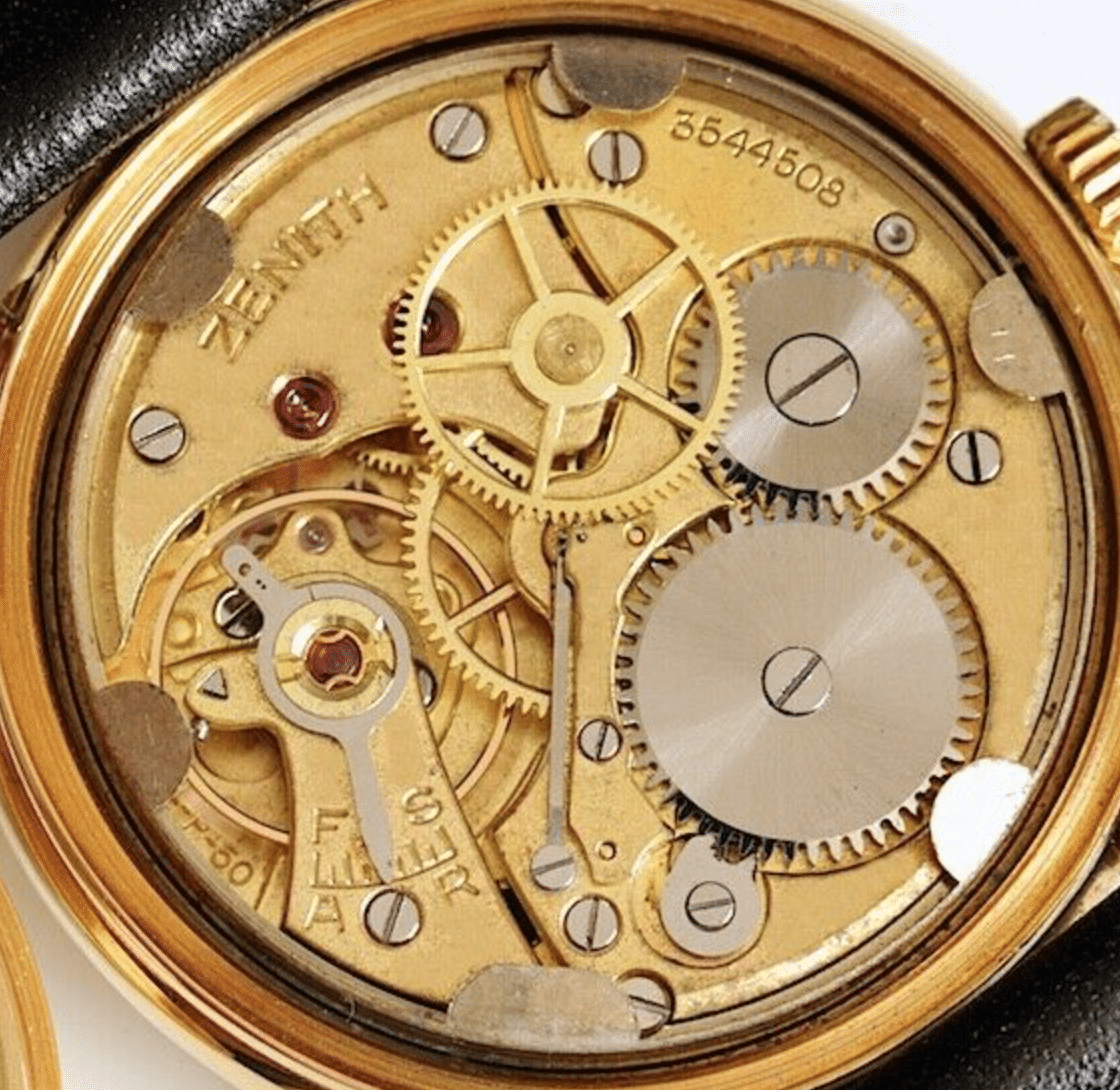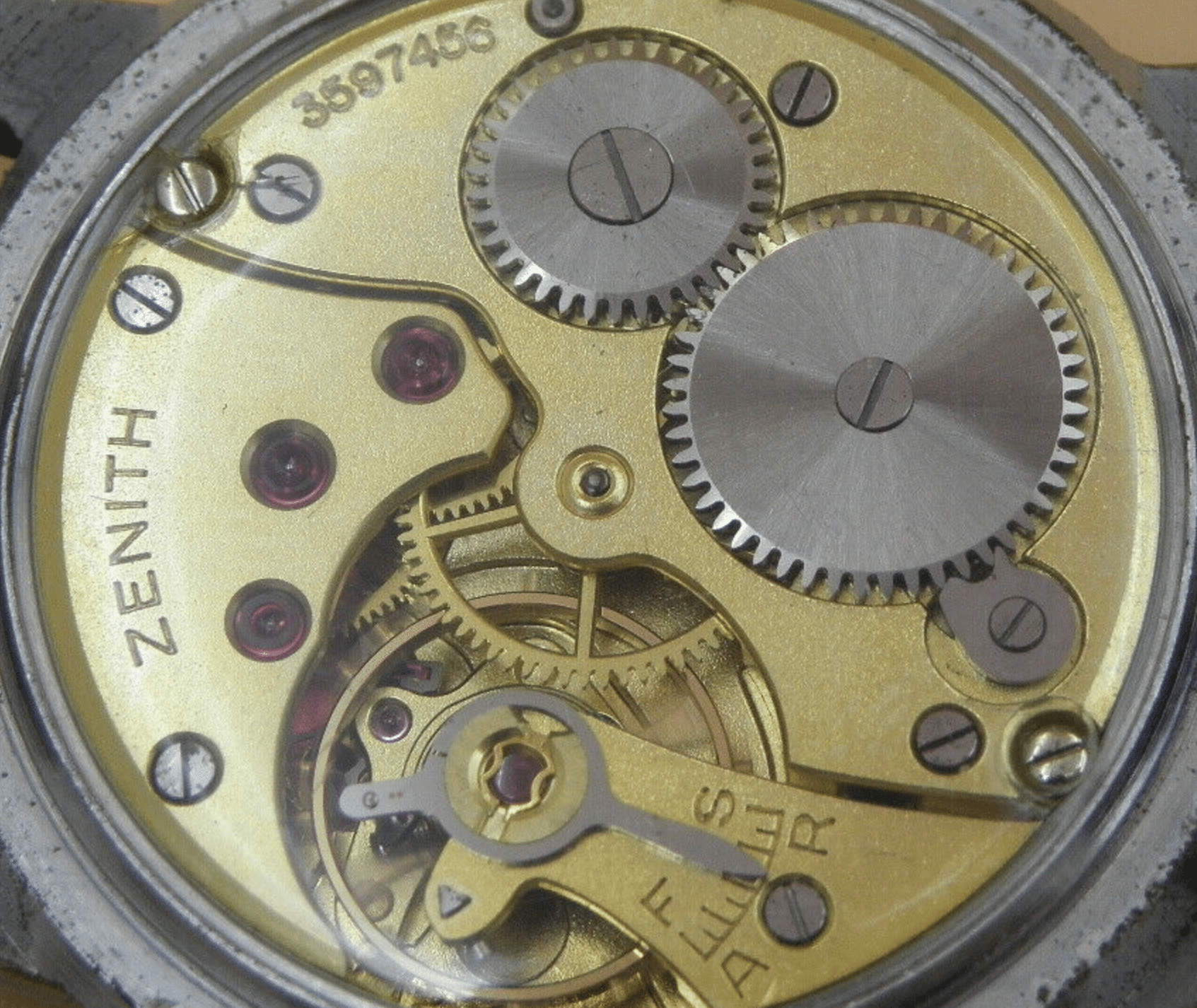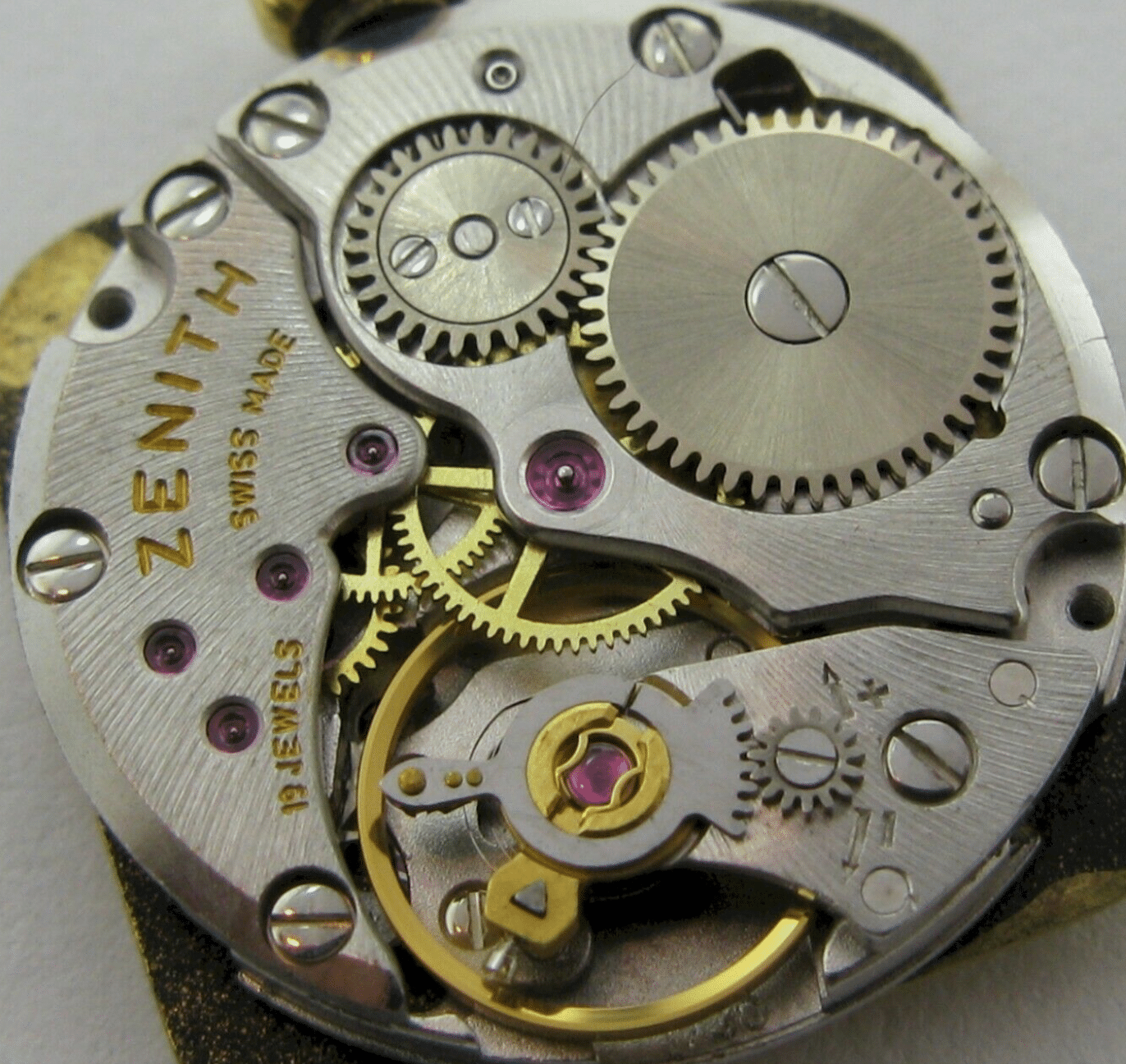The phrase “digital watch” tends to bring to mind LCD-display quartz-regulated watches; watches that are widely available, cheap, but perhaps lack something of the “soul” of mechanical watch. However the digital display actually predates quartz. These early models obscured the majority of the dial, revealing the hours and minutes on discs under apertures. There exist watches today that execute digital displays in similar fashion, as well as some others that “turn it up a notch”. Whereas the analogue display gives time a circular characteristic, and the retrograde display illustrates its linear nature, the digital display presents time as a single moment, one occasionally punctuated by the sudden jump of a numeral.
The MVT0/D01, by 4N, is one such example of a modern digital/mechanical display. There are three bridges holding discs for the hours, tens of minutes, and minutes. The hours and minutes bridges hold pivoted carriages and each carriage holds four and five pivoted discs, respectively. They rotate as a result of a planetary gear system. The tens of minutes are on a single bridge and pivoted disc. The planetary gears require a massive amount of power, and this is delivered by two mainspring barrels providing a highly impressive 237 hours of autonomy. In order for the balance wheel to remain isochronous the transmission features two spring-loaded constant force wheels, each one loaded by the rotation of its respective set of planetary gears, their constant force enables the balance wheel to oscillate with no sense of the acrobatics going on further upstream.
The de Grisogono Meccanico dG, with its analogue and digital display, which can function as dual time displays. The mechanical movement is comprised of 651 parts. Separated from the rest of the movement by a constant force mechanism, the configuration of each digital column is determined by a stack of cams programmed to a binary code. The pushers on either side can manually adjust the hours and minutes.
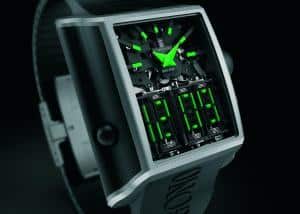
The Harry Winston Opus II. Places a single digit at the centre of an array of “shards” to indicate the hour and in a subsidiary section at 2 o’clock on the caseband is a jumping tens-of-minutes disc alongside a running minute unit disc. At the turn of the hour the jumping mechanism explodes, the planetary gears dance in the chaos before coming to a half and idicating the next hour numeral.
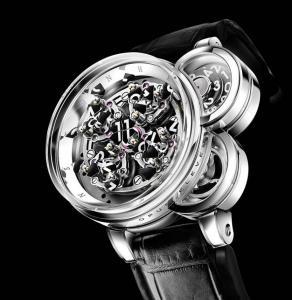
The MVT01/D01, by 4N. There is something about a case-full of discs and a lone balance wheel that makes a movement appear to be very simple. But this 514-component movement is not simple.

